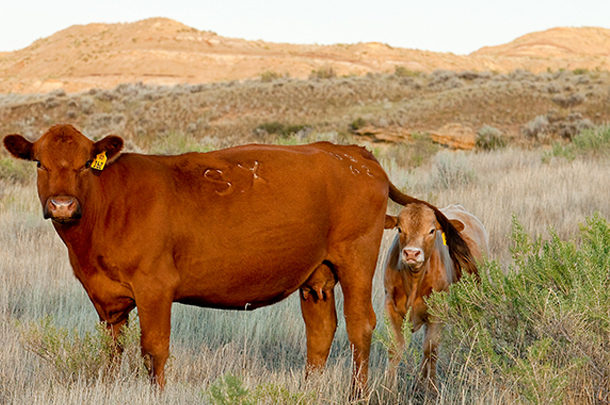The economic impact of cattle fever ticks, including the southern cattle fever tick, Rhipicephalus (Boophilus) microplus, was so severe in the late 1800s that the USDA started an eradication program in the early 1900s to eliminate the deadly disease bovine babesiosis, which is transmitted by this parasitic pest.
Although cattle fever ticks were declared eradicated in the U.S. in 1943, today they are still common in Mexico and can hitchhike on stray livestock, white-tailed deer and other wildlife that cross the Rio Grande River into Texas.
At the Agricultural Research Service’s (ARS) Tick and Biting Fly Research Unit in Kerrville, Texas, scientists are looking for ways to get rid of this pest for good. A new vaccine may help.
Insect physiologist Felix D. Guerrero and his colleagues made a significant discovery while sequencing the complicated, huge cattle tick genome, which contains about 2.5 times the DNA of the human genome. Sequencing the genome allowed them to determine the exact sequence of the entire set of tick proteins.
“We identified several proteins that might be good targets to exploit to try to disrupt the cattle tick’s function, and in doing so would likely kill it or at least impact its survival,” Guerrero says. “One of those proteins was aquaporin.”
Aquaporins are water channels that assist the tick in excreting the large amount of water it ingests with a blood meal, he adds. Aquaporins are present in all higher organisms, including arthropods and mammals.
 Female cattle ticks preparing to lay eggs. These ticks can transmit serious diseases to cattle. Photo by Jason Tidwell. Photos provided by USDA Agricultural Research Service.
Female cattle ticks preparing to lay eggs. These ticks can transmit serious diseases to cattle. Photo by Jason Tidwell. Photos provided by USDA Agricultural Research Service.Guerrero and his fellow scientists developed a recombinant tick aquaporin protein vaccine and partnered with the Brazilian Agricultural Research Corporation (Embrapa) to test the vaccine’s ability to protect cattle against infestation.
Molecular biologist Renato Andreotti and his team at the Embrapa National Center for Beef Cattle Research in Campo Grande, Brazil, put animals infested with a known amount of cattle tick larvae into two pens.
One group was vaccinated with the aquaporin vaccine, and the other group was not vaccinated. Researchers compared the number of adult ticks produced on each vaccinated and unvaccinated cow.
“In two trials, we saw a 75 percent and 68 percent reduction in the number of ticks on vaccinated 1-year-old Holstein calves,” Guerrero says. “This demonstrated that the aquaporin protein shows promise as an antigen in cattle vaccines to help prevent cattle fever tick infestations.”
Only a limited number of acaricides (chemicals that kill ticks) are available to cattle producers, and ticks have developed resistance to most, including pyrethroids, organophosphates and amitraz, Guerrero says.
Vaccines provide an alternative to chemical acaricides for tick control.
“Presently, only one anti-tick vaccine is commercially available, and it’s produced in Cuba. Our work aims to provide new vaccines for the cattle industry,” he adds.
Although Texas ranchers follow eradication program guidelines and treat their cattle, infested wildlife can keep a cattle fever tick infestation going, Guerrero says. Cattle fever ticks transmit the agents that cause bovine babesiosis and anaplasmosis, which kill cattle.
“Our research goal is to provide tools for U.S. ranchers to help control cattle fever ticks and prevent reinfestation of the United States,” Guerrero says. “This new vaccine is one more step toward meeting that goal.”
ARS has received a patent on the aquaporin protein vaccine and on another tick vaccine tested at the same time in Brazil. The agency is working with an animal health company, looking at the feasibility of producing a commercial aquaporin vaccine.
This study was published in Parasites and Vectors in 2014.
—This article was originally published in the January 2016 issue of AgResearch Magazine.










